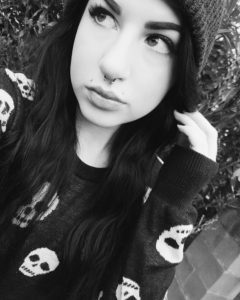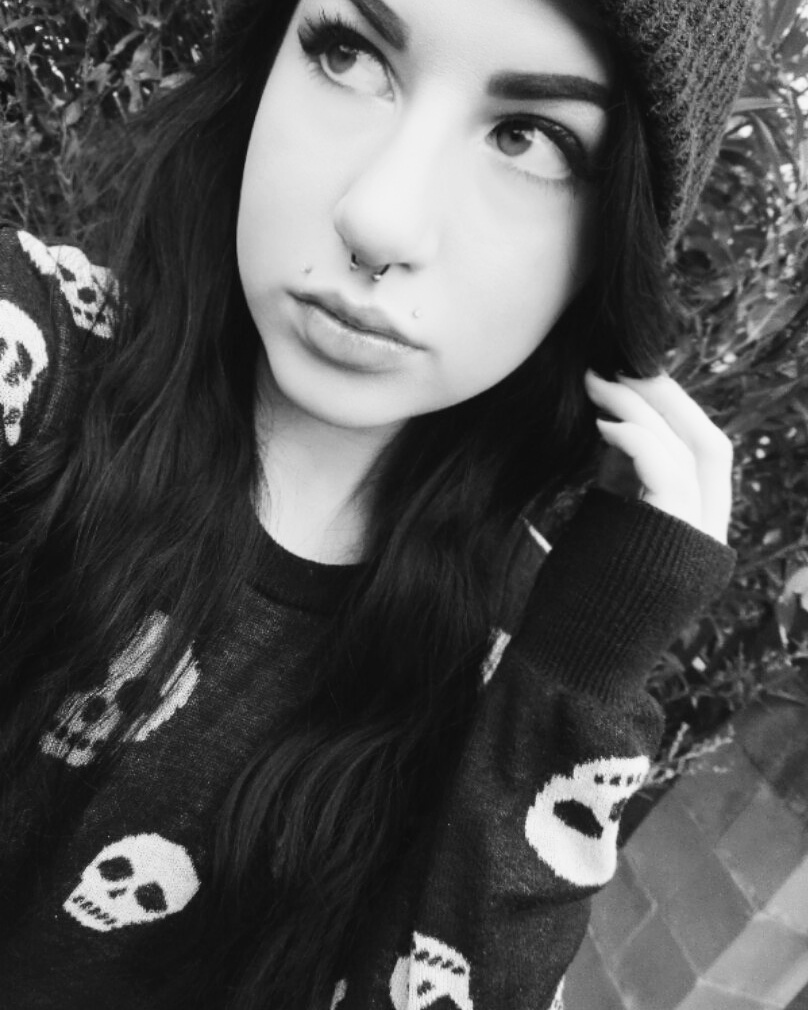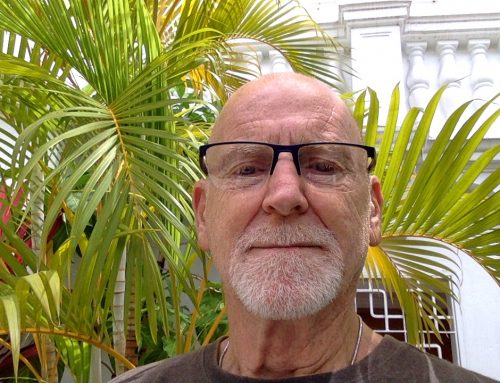Me Vs. My Eating Disorder: How I realized that I was sick and learned to differentiate myself from my sickness
By Sparklle Rainne
My eating disorder began when I was only eight years old. It began with bulimia, but my diagnosis has changed multiple times throughout my life – I’ve been diagnosed with bulimia, anorexia, and EDNOS/OSFED at separate times during the span of my treatment. By the time that I was eighteen, I was binging and purging all day every day. It never ended. I felt like a hopeless case. I had attempted to recover many times at that point.
Since I was so young when it started, I grew up feeling that my eating disorder behaviors were simply a part of me. I didn’t know what an eating disorder was, so my eating disorder was just “a thing” that I did. Many people with eating disorders have a co-morbid illness, and growing up with a severe anxiety disorder, that was certainly the case for me. The first time that I made myself throw up, I was overwhelmingly anxious – you know that feeling when you’re so nervous that it makes you feel like you’re going to puke? I lived with that feeling 24/7 because of my anxiety disorder. The first time that I purged, I just did it to make that feeling go away. I got addicted to it.
Even though I didn’t know what an eating disorder was when I was eight years old, I had definitely heard of them by the time that I was ten. I was already devouring books about eating disorders like “The Best Little Girl In The World,” but somehow, it didn’t really resonate with me that I had an eating disorder myself. Despite this, living with my eating disorder was hell. I had enough of an inkling that I was doing something that I wasn’t supposed to do to know that I had to hide it, but it took me a very long time to recognize it as something that I needed and deserved to get help for. There are two major reasons for this:
1. No one told me that eating disorders can affect people of any size. I identified with the people in the books that I read, I had the same behaviors, but because there was so much stigma around what someone with an eating disorder looks like, I didn’t see myself as “skinny enough to be sick.” This is a problematic misconception because eating disorders affect people of all shapes, sizes, genders, races, backgrounds, income levels, genders, etc. Eating disorders are mental illnesses that do not discriminate.
2. On a similar note, I didn’t feel that I was sick enough because, well…I wasn’t dead. This is very common for people with eating disorders. I was in denial – even when the physical repercussions came along, which for me included fainting, thinning hair, blood in my vomit, amenorrhea, broken blood capillaries, weak bones, and more, I didn’t feel that I was sick enough to be taken seriously because, well…I was alive, and again, I didn’t see myself as thin enough. Most people don’t realize how sick they are until they’ve already done irreversible damage.
We need to change how we talk about eating disorders in the media. We need to continue to raise awareness and debunk myths about eating disorders.
I finally recognized that I definitely had a problem and definitely wanted help for it around the time that I was fifteen. Bulimia had turned into anorexia for me at that point and I was so sick of how much power it had over me. I felt that I had no control over any of my behaviors. I felt like I was possessed by a demon and since I had lived with it for so long, it was very hard for me to differentiate the demon from myself. In order to recover, I had to do just that: differentiate the eating disorder from myself and figure out who I was without it.
Obviously, that isn’t a fast process or an easy one. This is why early intervention is so important if it’s at all possible – the longer that you have an eating disorder, the more the line blurs between you and your eating disorder. For me, there was hardly a line. I grew up with my eating disorder. Unfortunately, the first time that I reached out for help on my own, I was paired with a therapist who had no experience with eating disorders. Looking back, I understand that she made a mistake – she should have referred me to a therapist that had experience with my issues. Seeing her made me feel even more hopeless. I stopped going to my sessions with her and sank even deeper into my eating disorder. By the time that I was eighteen, my bulimic behaviors had returned full-force and I was binging and purging 24/7.
I had been in therapy again with a great treatment team for about a year at that point, but obviously, my eating disorder was deep-rooted by then. My psychiatrist was looking for an inpatient facility for me. Oddly enough, that was my turning point. I realized that I had to recover, and more importantly that I wanted to. It has been a long road with one relapse in between, but I have been on the path to recovery for four years now. Trust me when I say that it is worth it and that everyone with an eating disorder needs and deserves to get help.
I’ve decided to end this article by listing a couple of resources that I have found helpful during my recovery:
NEDA (nationaleatingdisorders.org) – the official website of The National Eating Disorder Association. Their website offers information about eating disorders, a confidential online screening, contact information for their helpline, and more.
Proud2BMe (proud2bme.org) – an organization that is dedicated to promoting positive body image and encouraging healthy attitudes about food and weight.
 I am so thankful to have been able to write this article during National Eating Disorder Awareness Week. I am a singer/songwriter and an eating disorder recovery advocate. My social media pages, my music, my businesses, etc. (read: anything that I create, own, or run) will always serve as safe spaces for people who are recovering from eating disorders. This is a topic that I am very passionate about and I am so thankful that Stigma Fighters had me back to write about it!
I am so thankful to have been able to write this article during National Eating Disorder Awareness Week. I am a singer/songwriter and an eating disorder recovery advocate. My social media pages, my music, my businesses, etc. (read: anything that I create, own, or run) will always serve as safe spaces for people who are recovering from eating disorders. This is a topic that I am very passionate about and I am so thankful that Stigma Fighters had me back to write about it!








Leave A Comment